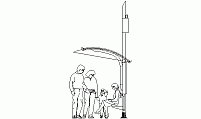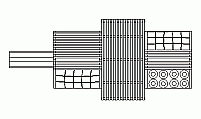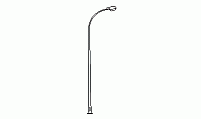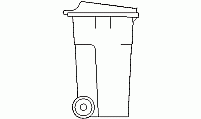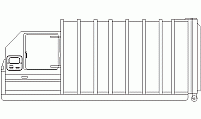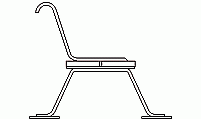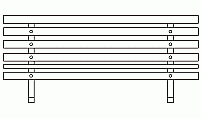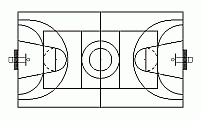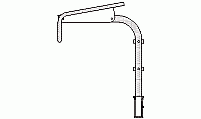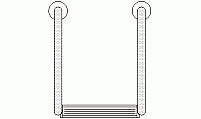CAD Blocks categories
 3D models
3D models home furniture
home furniture sanitary ware - bathrooms
sanitary ware - bathrooms professional equipment
professional equipment doors and windows
doors and windows people and animals
people and animals plants and trees
plants and trees vehicles - transports
vehicles - transports architectural details
architectural details mechanical - electrical
mechanical - electrical urban planning - civil works
urban planning - civil works safety health construction
safety health construction accessible design
accessible design drawing sheet
drawing sheet signals
signals construction machinery
construction machinery accessories and objects
accessories and objects maps and street maps
maps and street maps
Classic Playground Slide CAD Block with Detailed Features

size: 7 kb
category: street furniture
related categories:
description: This CAD drawing showcases a classic playground slide in a side elevation view, featuring a sloped slide and a ladder for climbing.
file extension: .dwg CAD - AutoCAD software
Specifications, Materials, and Safety Standards for Playground Slides
Features of the Classic Playground Slide
The classic playground slide is a simple yet timeless design found in parks and schoolyards worldwide. It typically consists of a straight or slightly curved sliding surface, supported by a sturdy frame. The ladder on one side allows children to climb to the top, while safety rails provide additional protection. Traditional materials for slides include stainless steel for the sliding surface and galvanized steel for the supporting structure, ensuring durability and longevity. The side rails are usually constructed from tubular steel to prevent falls during use.
Modern versions often replace steel slides with polyethylene, a durable and weather-resistant plastic, to minimize heat absorption and reduce maintenance. However, this classic steel slide design remains popular for its simplicity, functionality, and ease of cleaning. It’s commonly installed on playgrounds with a flat or sloped terrain, often accompanied by impact-absorbing surfacing below to enhance safety.
Common Dimensions and Specifications
The standard sliding boards, also known as straight slides or playground slides varies between 96 inches (2.44 meters) and 144 inches (3.66 meters), depending on the height and age range of users. Slide heights typically range from 48 inches (1.22 meters) for younger children to 96 inches (2.44 meters) for older kids. The ladder width is generally 16 inches (40.6 cm), and step heights are spaced at 8 inches (20.3 cm) to accommodate safe climbing. The slide’s width is typically around 18 inches (45.7 cm) to 24 inches (61 cm), providing sufficient space for children to slide down safely.
Construction and Installation Guidelines
- What materials are ideal for the sliding surface?
- Stainless steel is a preferred material for its durability, smooth surface, and resistance to weathering. Polyethylene is an alternative that offers lightweight and heat-resistant properties, reducing the risk of burns in hot climates.
- How should the frame be constructed?
- The supporting frame should be made of galvanized or powder-coated steel to prevent rust and corrosion. It must be securely anchored to the ground to prevent tipping or instability.
- What safety features should be included?
- Safety rails along the top platform and sides of the slide are essential to prevent falls. Ladder rungs should be non-slip and evenly spaced, while the landing area should include impact-absorbing surfacing such as rubber mulch or poured-in-place rubber.
- What is the best way to install the slide?
- The slide must be installed on a level surface, with the base securely fixed to concrete footings. All bolts and fasteners should be inspected regularly to ensure stability over time.
- What are the weight capacity and age recommendations?
- Most slides are designed to support up to 150 pounds (68 kg), making them suitable for children aged 5 to 12 years. Adult supervision is recommended during use to prevent misuse or overcrowding.
Safety Advantages of Classic Playground Slides
Classic playground slides provide a safe and enjoyable experience when installed and maintained properly. The smooth surface of stainless steel or polyethylene reduces friction, allowing for a controlled descent. Safety rails along the ladder and slide sides prevent accidental falls, while the ladder design ensures stability during climbing. Additionally, the robust frame can withstand outdoor elements, ensuring a long service life.
When paired with impact-absorbing surfacing such as rubber tiles or engineered wood fiber, these slides significantly reduce the risk of injuries from falls. They comply with international safety standards such as ASTM F1487, EN 1176, and CSA Z614, making them a reliable choice for public parks, school playgrounds, and residential areas.
History and Evolution of Playground Slides
Playground slides have been a staple in children’s play areas since the early 20th century. Initially made of wood, they were later constructed from metal for increased durability and smoother surfaces. Over time, advancements in materials such as polyethylene revolutionized slide design, offering safer and more versatile options for various climates and environments.
Globally, playground slides have evolved to include spirals, waves, and tunnels, catering to different preferences and spaces. While traditional straight slides like this classic design remain popular, their modern counterparts often incorporate interactive features such as water or light elements, enhancing the play experience for children of all ages.



